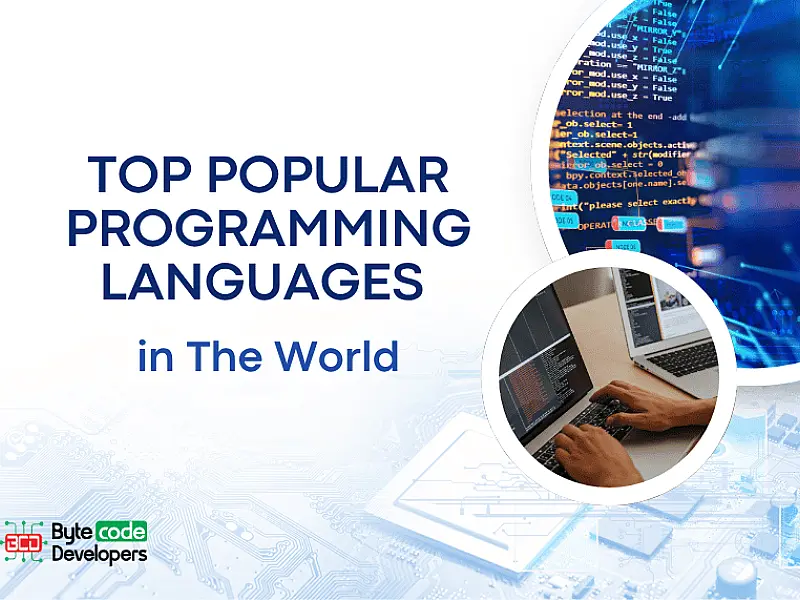
Table of Contents
Introduction to Programming Language Trends
The tech world never stops evolving. As of 2025, developers, companies, and startups rely on a mix of legacy and modern programming languages to build apps, services, websites, and AI tools.
Choosing the right programming language can:
- Define your career path
- Shape your startup’s tech stack
- Boost project scalability and security
- Let’s dive into the most used programming languages globally.
Why Programming Languages Matter in 2025
In 2025, the need for web apps, mobile tools, cloud automation, and AI continues to explode. Programming languages are the foundation of all this innovation.
Here’s what makes languages valuable:
- Community support
- Robust libraries
- Scalability
- Global demand and job availability
Most Used Programming Languages for Website Development
1. JavaScript
- The king of the web. JavaScript powers:
- Client-side interactivity
- Frontend frameworks like React, Vue.js, Next.js
- Backend via Node.js
2. PHP
- Despite critics, PHP still runs 80% of the internet through:
- WordPress
- Laravel
- Shared hosting environments
3. Python
- Known for its clean syntax and rapid development.
- Django and Flask for full-stack web apps
- Easy API creation
- Beginner-friendly
4. TypeScript
- A typed superset of JavaScript that boosts maintainability and developer experience.
- Angular
- React + TypeScript combos
- Great for scaling apps
5. Ruby
- Though less popular now, Ruby on Rails still offers:
- Rapid app development
- Elegant syntax
- A strong niche in certain startups
Most Popular Programming Languages for Software Development
1. Java
The reliable workhorse for:
- Android apps
- Enterprise ERP systems
- Backend systems in banking, telecom
2025 Outlook: Still dominant in enterprise despite rising competitors
2. C#
Used heavily with Microsoft ecosystem, especially:
- Windows apps
- Unity game development
- ASP.NET backends
3. C/C++
Performance-focused, perfect for:
- Game engines
- Embedded systems
- OS-level programming
2025: Used in fintech, simulations, robotics
4. Go (Golang)
- Google’s answer to scalability and simplicity.
- Backend microservices
- DevOps tools (Kubernetes)
- Low memory footprint
Loved by: Startups and system architects
5. Rust
Memory-safe and modern, Rust is replacing C++ in some systems.
Excellent concurrency handling
Compiler-enforced safety
Ideal for blockchain and crypto tools
Fastest Growing Programming Languages in 2025
1. Kotlin
- JetBrains-backed
- Official Android app language
- Replacing Java in modern mobile dev
2. Swift
- iOS/macOS development standard
- Faster than Objective-C
- Popular in fintech and travel apps
3. Dart (Flutter)
- UI-focused
- Build once, deploy on Android, iOS, Web
- Used by Alibaba, eBay, Google Ads
Programming Languages for AI and Data Science
Python
- Dominates AI & ML
- Libraries: TensorFlow, PyTorch, Scikit-Learn
- Used in NLP, image recognition, robotics
R
- Statisticians’ go-to
- Data visualization
- Great for academia and analytics
Julia
- Emerging for high-performance scientific computing
- Competes with Python in some niches
Backend vs Frontend Programming Languages
| Layer | Languages |
|---|---|
| Frontend | HTML, CSS, JavaScript, TypeScript |
| Backend | Python, PHP, Node.js, Go, Java, C# |
Top Programming Languages for DevOps & Cloud
- Bash: Automation scripts
- Python: Infrastructure management (Ansible, Boto3 for AWS)
- Go: Kubernetes, Docker
- YAML + JSON: Declarative configs (Terraform, Helm)
Most In-Demand Languages by Region (2025)
| Region | Top Language |
|---|---|
| USA | JavaScript, Python, Java |
| Europe | Java, C#, TypeScript |
| Asia | Python, PHP, Go |
| Middle East | JavaScript, Python |
| Nepal & South Asia | PHP, Java, Python |
How to Choose the Right Programming Language
Ask yourself:
- What do I want to build? (Web, mobile, desktop, AI?)
- Where do I want to work? (Enterprise vs startup)
- How fast do I want to learn and launch?
- Is the language supported in my country or region?
- What are the job market trends?
Conclusion
The world of programming languages is diverse and fast-moving. Whether you're building the next AI tool, a beautiful website, or a scalable SaaS, the language you choose matters.
Start with a purpose, pick your stack, and focus on mastering the ecosystem. No language is better than another — it all depends on your goals.




 March 26, 2025
March 26, 2025

-thumb.webp)











